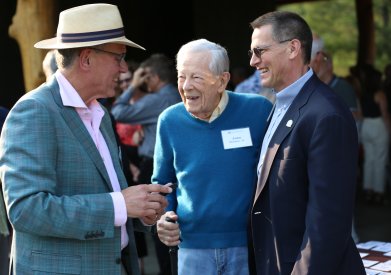Incurable and Irreversible
March 6, 2013
My Argentinean mother-in-law is 95 years old and suffers from advancing dementia. She has lived with my sister-in-law for the last eight years and both of her daughters are considered her caregivers. A person comes to the house for about seven hours a day to assist her in activities of daily living.
After suffering what appeared to be a stroke several weeks ago, she was taken from her home by ambulance and admitted to the neurology floor of an academic medical center. Over the next five days, she was given a battery of tests – except an MRI (she has a pacemaker without a defibrillator) which might have provided an indication whether she had a stroke, transient ischemic attack (TIA) or a seizure. Within 24 hours of the event, her speech returned to normal but she continues to suffer left-side weakness.
As this was all happening, my sister-in-law showed me her advanced directive which she had brought to the hospital that night. The first line still haunts me, particularly the words:
Incurable or irreversible condition
At a very stressful and emotional time, my wife and sister-in-law were left guessing what exactly those words meant and what their mother would want (because of my mother-in-law’s dementia, my sister-in-law has power of attorney). They asked me what I thought they meant. I hesitated and could only give them an answer based on what I would have wanted. Her daughters’ desire was to prevent pain and suffering, and see if her baseline functioning could be restored. A Do-Not-Resuscitate (DNR) was not ordered because it would mean withholding care that could save her life. I listened and tried to run through different scenarios with them: What it would be like if she had a heart attack, if she couldn’t eat, etc. It seemed like we were at a crossroads and decisions needed to be made. Yet it was only after she was in a rehabilitation center that a DNR was put into place by her daughters with the guidance of a geriatric physician.
Ironically, the previous week I was on the phone with The Conversation Project’s Director Harvey Freishtat, and Project Director Lindsay Hunt. The Conversation Project was created by Ellen Goodman, the highly acclaimed op-ed writer for the Boston Globe who had a terrible experience caring for her mother at the end of her life. The project now operates in collaboration with the Institute of Healthcare Improvement and is dedicated to helping people talk about their wishes with their loved ones. Their Conversation Starter Kit asks the hard questions to enable conversations with family members. A sample of the questions gives you a good idea about what the project is all about:
- What matters to me at the end of life?
- On a scale of 1-5, 1 being “I’m worried that I won’t get enough care” and 5 being “I am worried I will get overly aggressive care,” how long do you want to receive care? (I scored a 5.)
What’s important about this project is that it makes us think about the care we want to receive at the end of life and how we would like to die. For many of us, this is very welcomed. For others who do not wish to think about the end of their life, we need to respect that wish. But we do know that most people want to have plans in place for the end of their life and we need ways like the Conversation Project to help us have these important conversations. These conversations will help in developing more concrete instructions for our loves that can be placed in advanced directives.
It’s not about hysterical death panels. For me, it’s just practical. At the end of my life, I don’t want my family to have to interpret what “incurable and irreversible condition” means.
Daniel B. Wolfson
EVP and COO, ABIM Foundation



